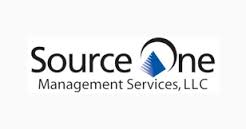
I was recently part of a team tasked with reviewing the onboarding process at my company. Our goal was to ensure that we were setting our new hires up for success from day one. Even though it had only been a few years since the process was first developed, our company had grown and evolved significantly. Based on the changes our company had gone through adding new services, growing our geographic footprint, updating our processes, etc. we felt it was time to take another look and make sure that the way we approached onboarding still fit with the current state of the organization.
The first step we took was to talk to different team members and collect their feedback on their onboarding process. We made sure to interview team members from all different levels and departments to ensure that we had a good sampling of different perspectives. We asked for their feedback on their onboarding experience the things they liked, the things that weren’t very helpful, and the things they learned later and wished were included. Overall, there were a few common themes in what people would like to have added to the process, that could be applicable to any organization’s onboarding process, including:
Length There are varying opinions on how long an onboarding process should take. Should it be one day to get ramped up on the basics and learn the rest through on the job experience? Or should there be a two week intensive training process before any work is handed off? Unfortunately, there is no correct answer; there is value in both approaches and individuals may have a preference for one versus another. Many believe that there is no better way to learn than getting started for yourself, while others prefer a more formal training process. Depending on the complexity of your role or requirements of your industry, that may dictate how long a new hire should be trained before they get started with the work. Otherwise, you should try to find the balance between training your team on the core skills and allowing them the opportunity to learn through experience.
Format Should training be one-on-one? Online? Lecture style? The format for which you share the onboarding courses should be based on the content of that course. For example, any content that is tactical in nature, navigating the internal drives and tools or how to use the phone system, can be explained through online training portals. However, content that is more complex or strategic around processes and best practices should have some degree of management interaction to ensure that the correct message is being conveyed and understood. Similarly, onboarding content around roles and responsibilities, career development, and performance should be communicated in person by that individual’s manager.
Process/Best Practices Process training is essential to any onboarding process regardless of the industry. Making sure that the new team member knows how to do their job is one of the main reasons that an onboarding process exists. You should make sure that you have a clear training process for the various steps and procedures that are part of the new hire’s everyday job function. Additionally, you should try to convey any information that could be helpful for them as they begin their work, including best practices, key terminology, helpful hints, etc. It is important to make sure that this information can also be available after the initial onboarding process as a reference as they begin their work.
Tools and Technology It is important to make sure that any new hire is made aware of the tools and technologies available to them. You should make sure that you are not only making the team aware that these tools exist, but also communicating why they may be used and how they work. Oftentimes there may be a software or program that is able to expedite a given task but is not widely known by all team members. It is important to make this information known upfront to avoid this situations, while also ensuring that those lists are updated regularly as new technologies are developed.
Culture Finally, any potentially most complicated, your onboarding process should start to orientate the new hire into the culture of your organization. The onboarding process should start to set the tone for that culture in everything from introducing the person around the office to the messaging used in all of the training materials. Culture can’t be communicated in a slide deck, but you should try to incorporate pieces of what makes your company unique in those materials so that the new hire gets a feel for where they are starting to work. Employee engagement is vital to a company’s success and engagement starts from the first day on the job. A key component to employee engagement is the ability to integrate with the organization’s culture.
An effective and thorough onboarding process is essential for the success of not only new hires, but also the organization as a whole. We should always make sure that we are preparing our employees so that they are ready to begin in their new role and able to continue to grow in their careers. Luckily for my company, we didn’t need to start from scratch with our onboarding process, but there were areas that we could improve to make sure that our employees were ready to hit the ground running from the start.
About the Author: Megan Connell is a Spend Management Consultant at Source One Management Services and a proven asset in leading and executing strategic sourcing and budget optimization strategies. She is a leader in providing clients outside the box solutions, through detailed stakeholder collaboration and engagement. Her high level of analytical skills and vendor management expertise helps streamline clients operations and drive sustainable cost savings.
